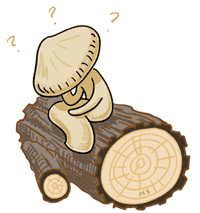Organic Mushrooms? Shiitake Happens!

Are there organic mushrooms? A cursory glance at CFR 205, the Organic Foods Production Act (OFPA), and other historical organic documents offers only one mention of the word “mushrooms”—dictating that the National Organic Standards Board create recommendations for organic mushroom standards.
There has been some discussion on the subject. However, to date no specific rule language has been written that would regulate certifiers or their clients. OFPA provides no statutory authority or responsibility for mushrooms. They are generally considered to be included in the expanded “scope” of USDA certification that includes pet foods and personal care items.
Until a recent Accredited Certification Agency training session, many certifiers have been certifying organic mushrooms as they have for over 20 years—based on standards created by certifiers that were in business long before CFR 205 and the National Organic Program (NOP) were created. Recently some certifiers were told that their standards do not match the interpretations of the NOP—that synthetic “inputs” are being allowed. The question is: when does a “material” become an “input”?
The mushroom in question is the shiitake. Some producers grow them on real logs, and some grow them on “artificial logs” made from sawdust and grains. Many who grow them on real logs do not feel that artificial log-grown shiitake are really organic. The question will be resolved not in the producers’ opinions but in the opinion of the NOP.
In log-grown shiitake the spawn is placed in holes drilled into the logs and the moisture necessary to facilitate growth is held by a barrier—typically and historically a wax. In most cases the wax used is a microcrystalline, food grade, biodegradable (albeit “synthetic”) product. The wax is used to hold moisture in place until the spawn begins to grow. From the beginning of “organic time” there has been little question of this practice. Indeed, most of the largest certifiers in the world have allowed the use of this wax.
The artificial “logs” used by those who do not produce the “natural way” also use synthetics. Plastic bags are used to hold the “logs” together and to hold moisture. But is a moisture barrier an input? Many shiitake producers and their certifiers say no. NOP seems to be unwilling to understand the difference between an “input” and a moisture barrier or—as many producers may call it—a “production aid.” Wax used to hold moisture in a log seems different to NOP than a plastic pot that is used to hold moisture around the roots of transplants. Using plastic bags to hold sawdust, grain, and moisture together for mushroom production seems different to NOP than using wax to hold moisture in a hole in a log. I am now beginning to question the status of a synthetic post used to tie up a tomato plant or a plastic tie used to fasten it to such a pole.
As a certifier this affects me minimally; I have one client whose certification is affected by this. Certifiers will have to do what NOP says, which at this time is simply to figure out how to stop the use of microcrystalline cheese wax in mushroom production. (This wax is regularly used on organic cheese production as well and seems, so far, to be accepted.) The impact on an industry—a cadre of shiitake growers—is important. There are more than a few shiitake growers who have been doing what has been allowed all along, never thinking that they were violating organic code. And so a controversy begins.
This issue was brought to my attention by producers seeking certification who had heard that the wax was prohibited. Word spread to a number of producers who are most unhappy about the need to change practices. At this time they are working together to collect information that will address the impact of this interpretation on their industry and their growers.
A few plan to be at the April NOSB meeting to provide public input. Though mushroom production is not on the agenda, it is important enough and urgent enough to merit NOP’s attention at this time.
If, after listening to the experts in this field, NOP stands by its recent opinion, then “natural” alternatives must be used. These include beeswax or wooden plugs, both of which most growers find problematic. There are Styrofoam plugs on the market as well; however, we don’t know if NOP would consider them an input or not. In all cases the plugs do not touch the mushroom that consumers buy in the store, and the synthetic material is not taken up in the mushroom.
Microcrystalline wax can also be petitioned for placement on the National List which would render it an allowed synthetic for use in crop production. However, the petition and placement process literally take years, and even then it offers no promise of success. The answer to this dilemma will not likely come quickly. Had producers seen this coming, they would have petitioned years ago. Those with whom I have spoken had no idea things had changed, nor did the certifiers. If a violation has occurred, it was not done knowingly and willingly.
We can only hope that members of the NOP will really listen to the producers who will be taking time to come to the next meeting. In the past there have been occasions when they exhibited open minds and ears to farmers who traveled far to represent their needs. NOP and the National Organic Standards Board have much on their plates, but a few good organic mushrooms can really round out a meal.
***
Cissy Bowman is an organic certifier and manages Hoosier Organic Marketing Education, a nonprofit organization (317-539-4317 or [email protected]).







